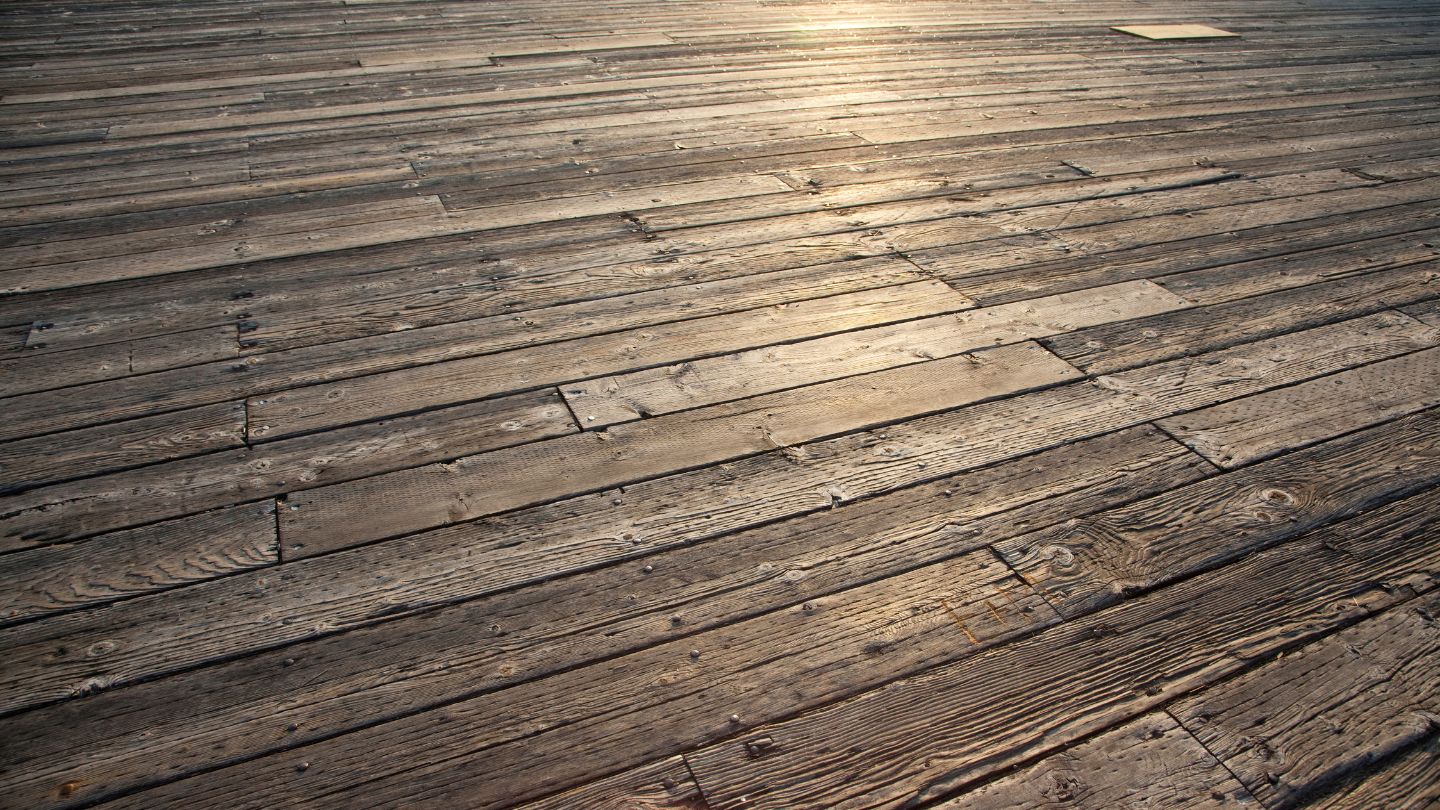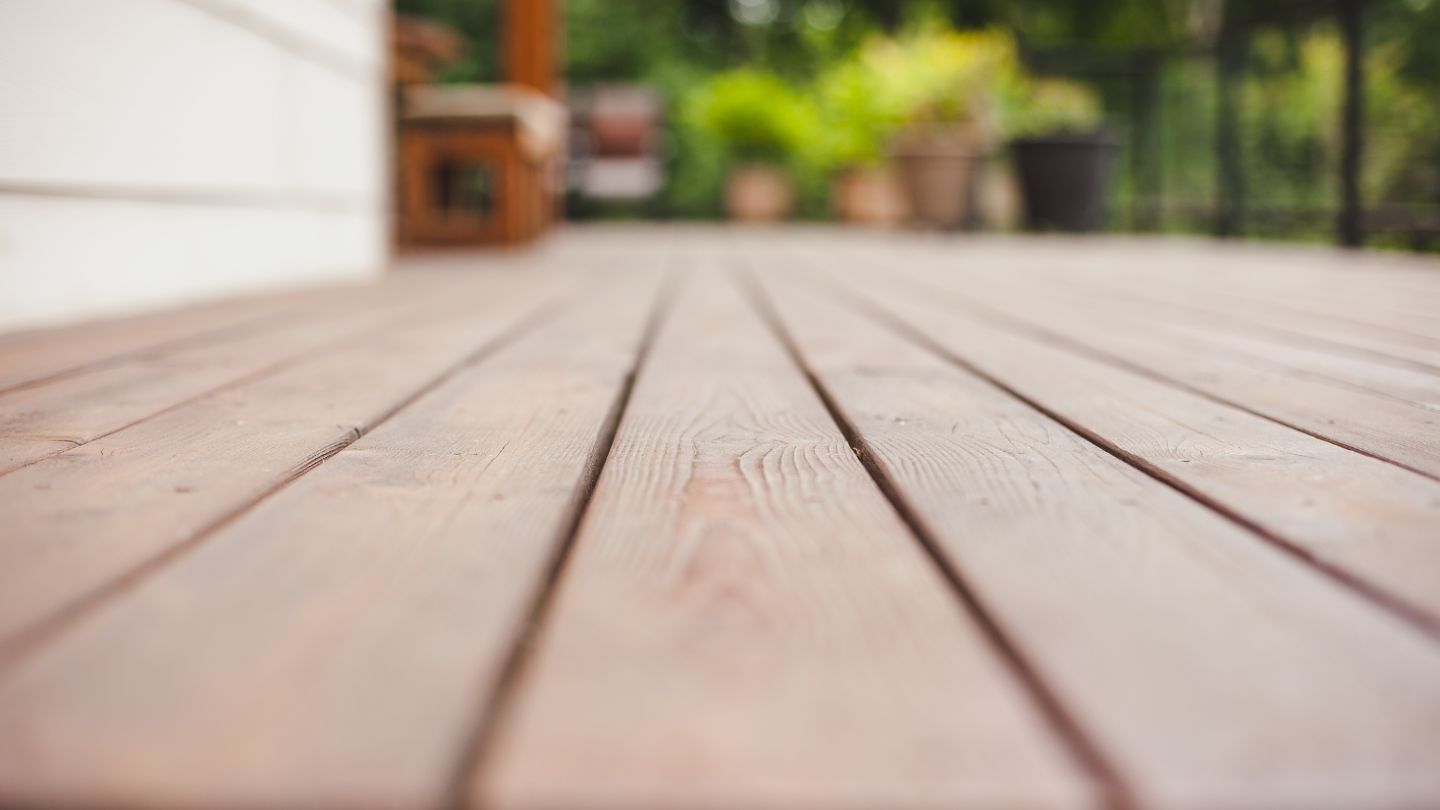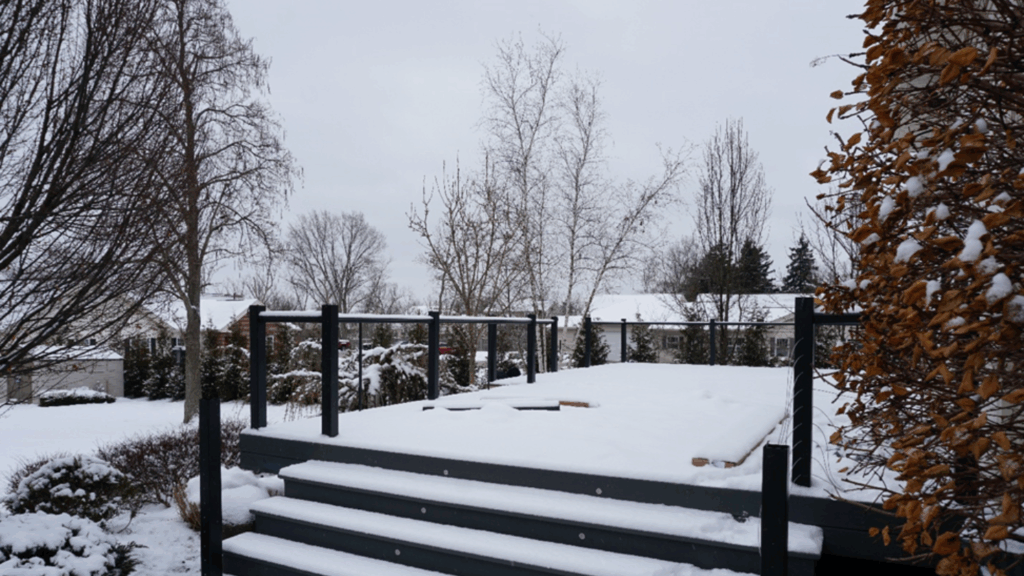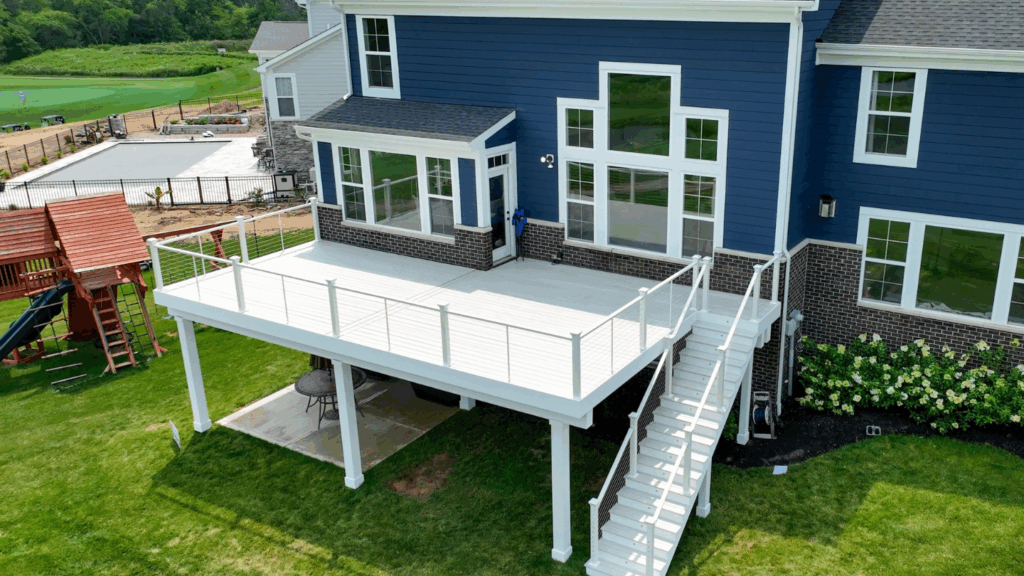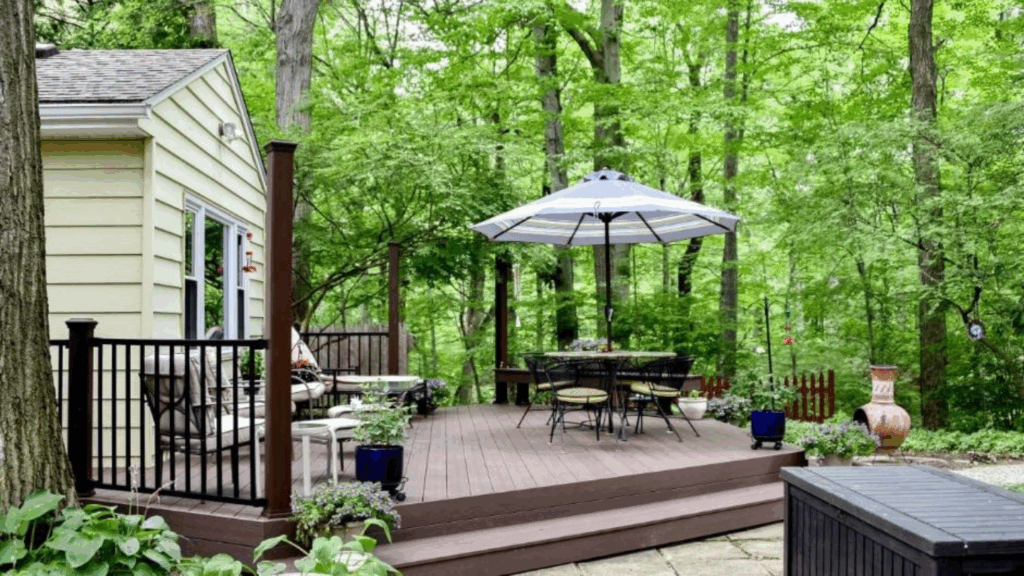Composite decking has become one of the most popular outdoor decking solutions due to its low maintenance, durability, and attractive appearance. Homeowners seeking a modern, long-lasting alternative to traditional wood decking often turn to composite materials for their patios, porches, and backyard retreats.
This blog explores the reasons behind cracking in composite decks, how to prevent it, and what you can do if your deck board shows signs of damage. Understanding the root causes will help you maintain your deck’s structural integrity and extend its lifespan, especially when it comes to protecting your investment in a composite decking installation.
What Is Composite Decking?
Composite decking is a blend of wood fibers and recycled plastic, engineered to mimic the natural look of wood while offering superior durability. This decking material resists moisture, insects, rot, and warping—common issues with traditional wood decks. Capped composite decking includes a protective layer that shields the composite core from the elements, improving color retention and reducing surface wear.
While composite decking boards are designed for strength and longevity, they are not completely immune to problems. In rare cases, issues such as cracking can occur, especially when proper installation or maintenance guidelines are overlooked.
Why Do Composite Decks Crack?
1. Thermal Expansion and Contraction
Composite material naturally expands and contracts with temperature changes. If composite deck boards are installed too tightly without allowing for movement, they may press against each other as they expand, causing pressure cracks. Conversely, extreme cold may lead to minor shrinkage, potentially stressing fasteners or structural supports. It is essential that the correct fasteners are used per manufacturers specifications to allow for this normal movements.
2. Improper Installation
One of the leading causes of cracking in a composite deck board is incorrect installation. Inadequate spacing between boards, improperly secured fasteners, or subpar support framing can result in uneven stress distribution. Over time, these errors may cause the decking board to crack under pressure or foot traffic.
Professional composite decking installation is essential for long-term performance. When installed by a team with experience in outdoor decking systems, these problems are far less likely to occur.
3. Substandard Composite Material
Not all composite decking is created equal. Early generation or lower-quality composite boards without a protective plastic cap can crack more easily. High-quality capped composite decking offers better resistance to splitting, moisture, and UV exposure. Choosing a trusted product and working with a reputable installer makes a significant difference in performance. Our recommendation is to stick with the reputable brands such as Trex, TimberTech, Azek, and Deckorators.
4. Structural Movement or Weak Supports
Deck damage can also stem from underlying structural issues. Deck posts that shift, settle, or weaken over time may alter the surface’s stability. If the substructure isn’t properly aligned or reinforced, the decking surface can flex too much, leading to cracking under stress.
5. Heavy Impacts or Overloading
Composite decking boards are durable, but they have limits. Dropping a heavy object or overloading your deck beyond its intended capacity can cause surface cracking. This is especially true if the decking material is thin or lacks proper support beneath.
6. Extreme Weather Conditions
Long-term exposure to intense sunlight, freezing temperatures, or moisture cycles can accelerate wear on any decking material. Although composite decks are built to withstand the elements better than wood decks, prolonged stress from freeze-thaw cycles may lead to surface cracks in older none capped or low-quality composite boards.
Spotting and Understanding the Signs of Cracking
If you notice visible cracking on your deck surface, along the edge of a decking board, or at a fastener point, take action early. Cracks may appear as:
- Hairline fractures near screw heads or board edges
- Deep surface splits across the deck board
- Minor splintering or rough textures (though uncommon in composite)
Inspect all areas for signs of deck damage, including underneath the structure, around railing posts, and near high-traffic zones. Catching issues early can prevent further deterioration.
Composite vs. Wood Decking: How Cracking Differs
Wooden decking is prone to natural splitting, warping, and cracking due to moisture absorption and UV exposure. Composite, on the other hand, is more dimensionally stable and designed to minimize such issues. That said, composite cladding and boards still require proper care and thoughtful installation to ensure long-term performance.
Traditional wood decking may also require regular staining or sealing to prevent cracking, while composite wood decking typically retains its finish without additional maintenance. Still, composite decks benefit from periodic cleaning and inspections.
How to Prevent Composite Deck Cracking
1. Choose Name Brand Capped Composite Boards
Opt for name brand cap composite deck boards designed with a strong core and protective cap. Quality materials reduce the risk of cracking and extend the deck’s life.
2. Ensure Proper Installation
Work with professionals who specialize in composite decking installation and understand the nuances of spacing, fasteners, and structural requirements. The foundation and framing of your deck matter just as much as the surface.
3. Allow for Expansion Gaps
Always include proper spacing between composite boards during installation. This allows for natural movement and prevents stress buildup that leads to cracking.
4. Use Recommended Fasteners
Avoid using nails or incompatible screws. Use manufacturer-approved fasteners and hidden clip systems that provide secure connections without compromising the deck surface.
5. Avoid Excessive Loads
Do not overload your deck with heavy furniture, planters, or other objects beyond its weight capacity. Spread loads evenly and be cautious with impacts.
6. Keep Your Deck Clean
Remove debris, dirt, and buildup regularly to preserve the deck surface. Accumulated debris can trap moisture, which may compromise the integrity of your composite board over time.
What to Do If You Notice Cracks
If you see cracks forming in your composite boards, consult with a decking professional. Depending on the severity and location of the damage, your options may include:
- Board replacement – A single damaged board can often be replaced without redoing the entire deck.
- Fastener inspection – Cracking near screw holes may be resolved by adjusting or replacing fasteners.
- Structural reinforcement – If movement beneath the deck is causing damage, reinforcing posts or joists may be necessary.
Avoid attempting deck repair yourself if you’re unsure about the structure or materials involved—improper handling can cause more harm than good.
Composite Decking Longevity and Maintenance
When properly installed and maintained, composite decks offer excellent longevity with minimal upkeep. Compared to wood decks, they resist staining, moisture damage, insect activity, and splintering. Whether used for porch flooring, backyard patios, or multi-level outdoor decking, composite boards can remain structurally sound for decades.
Be sure to monitor seasonal changes, keep your deck surface clean, and address any minor issues early. Composite fencing and cladding in matching finishes can also complement your space while providing the same level of low-maintenance performance.
Choosing the Right Composite Decking for Your Space
If you’re building a new deck or replacing an aging one, it’s essential to make an informed decision about the decking material. Composite offers a compelling mix of beauty, strength, and sustainability, especially when you’re committed to choosing the right composite decking based on your lifestyle, design goals, and regional climate.
Understanding product differences, design flexibility, and long-term performance can help you avoid future issues like cracking and ensure that your outdoor space remains a functional retreat for years to come.
Summary
Cracks in composite decking can arise due to improper installation, fluctuating weather conditions, subpar materials, or structural instability beneath the surface. The good news is that with the right decking material, skilled installation, and ongoing maintenance, these issues can be minimized or avoided entirely. Composite decking continues to be a top-tier choice for modern outdoor spaces, offering durability, style, and low-maintenance performance.
At Woodland Deck Company, our experienced team of deck builders in Columbus, Ohio, specializes in designing and installing composite decking solutions that are both visually stunning and structurally sound. We prioritize precision and craftsmanship in every project, ensuring each deck board is perfectly installed and built to withstand the elements. Whether you’re tackling existing deck damage or envisioning a new outdoor retreat, we’re here to help bring your ideal deck to life.
Let’s create a deck you’ll love—reach out to get started today.
